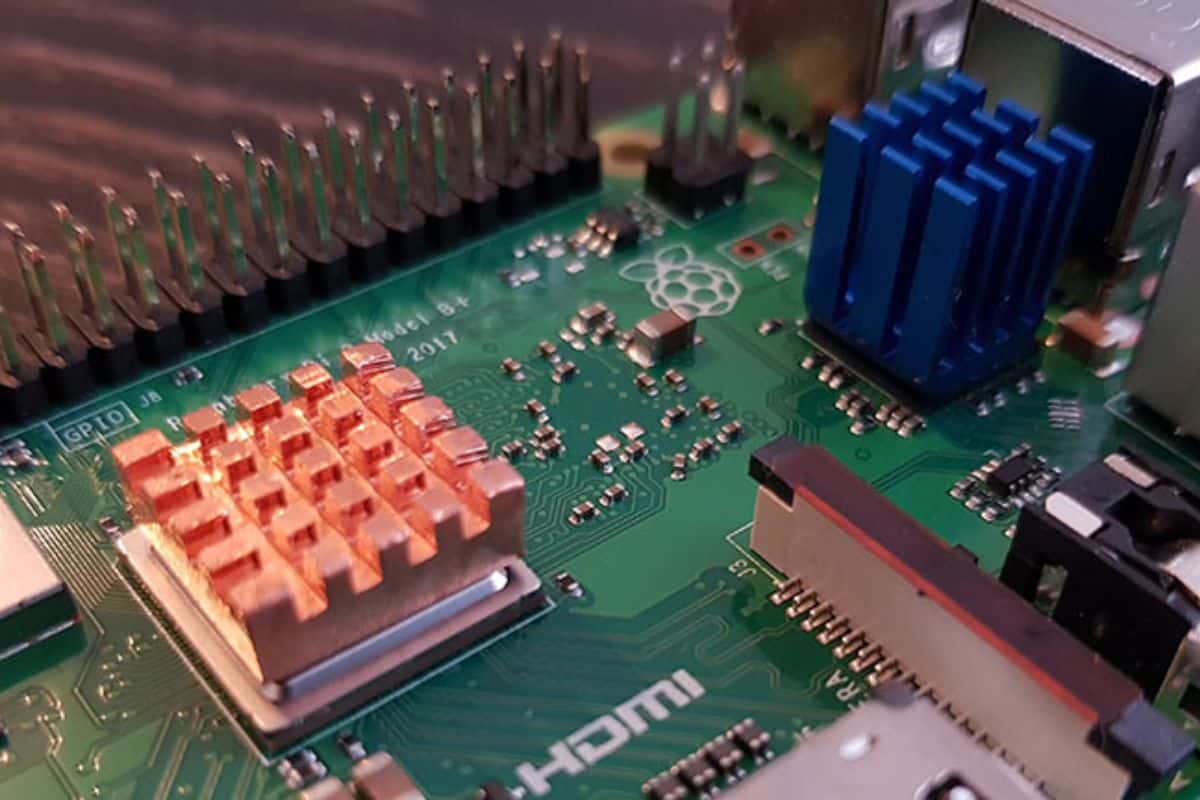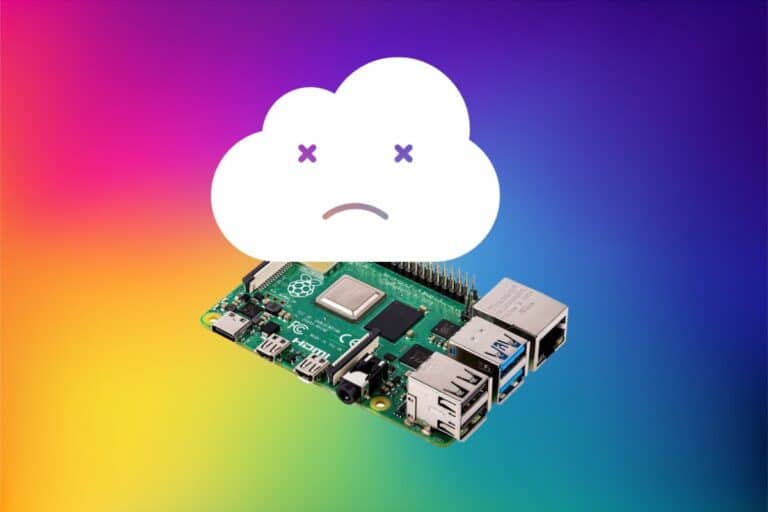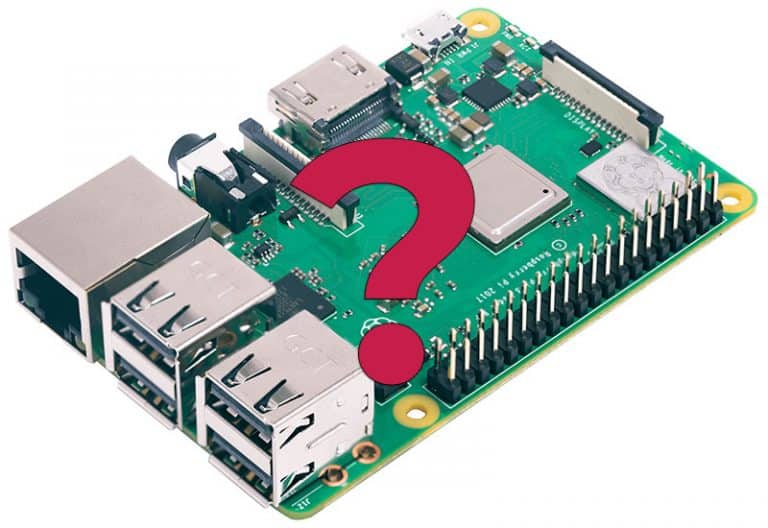Does Your Raspberry Pi Need Heatsinks? The definitive answer
Once upon a time, the Raspberry Pi was just a tiny board for simple projects. It’s grown into a mighty little computer that has us wondering how it can run without any cooling, like heatsinks or fans. I followed this trend and tested most of the models, and here are my answers.
Raspberry Pi are designed to run without the need for an additional cooling system. Heatsinks are not required, and it’s safe to use a Pi without them. They can, however, be beneficial for safety and performance in projects where more CPU power is used.
Well, that’s the short answer, and as always, there are nuances depending on which model you use for your projects. Let’s start by making sure you understand the theory, and then I’ll get back to the hardware recommendations.
If you need help getting started on Raspberry Pi, I have an entire course to guide you through your first steps. I’ll help you use the perfect hardware, plug everything in and install your first system. You’ll also do your first projects with me, just to make sure you are ready for the next level. Get all the information on this page if you are interested.
Introduction to Raspberry Pi temperature management
What happens if a Raspberry Pi overheats?
Raspberry Pis are protected from overheating with thermal throttling. The Raspberry Pi will automatically reduce performance to cool down when the CPU reaches the threshold temperature.
What does that mean?
When the CPU temperature reaches around 80°C (176°F), the Raspberry Pi firmware will automatically reduce the clock speed of the CPU to prevent overheating (more about that here).
This avoids damage and instability on the Raspberry Pi, but it’s not necessarily ideal if you need the CPU power for your project. That’s why we can’t say that a cooling system is completely useless, it depends on how often you reach this threshold (if ever).
How to monitor the Raspberry Pi’s temperature?
Knowing that, it’s important to keep an eye on your CPU temperature. This will ensure you quickly know if you are often close to the limit, or if the Raspberry Pi stays cool enough and doesn’t need heatsinks or another cooling system.
The temperature of the Raspberry Pi can be monitored via widgets in the graphical interface, commands like ‘vcgencmd measure_temp’ or other monitoring tools.
It’s slightly different depending on the operating system and version you use, but you can generally add a widget in your top bar, representing the current CPU temperature. On Raspberry Pi OS, it looks like:
If you are lost in all these new words and abbreviations, request my free Raspberry Pi glossary here (PDF format)!
Download now

At a glance, you can say whether you’re close to the 80°C limit or not, and see what kind of applications or use impact the CPU temperature the most, and for how long.
If you don’t have an interface or prefer using the command line, here is the command that will give you the same information:vcgencmd measure_temp

You can even write a bash script to keep an eye on it for a long period (that’s what I did to create the graphs in the next section).
Are you a bit lost in the Linux command line? Check this article first for the most important commands to remember and a free downloadable cheat sheet so you can have the commands at your fingertips.
Join Our Community!
Connect, learn, and grow with other Raspberry Pi enthusiasts. Support RaspberryTips and enjoy an ad-free reading experience. Get exclusive monthly video tutorials and many other benefits.
Learn moreIt's a free PDF guide containing every Raspberry Pi Linux command you should know!
Download now
Do you need heatsinks for your Raspberry Pi?
Now that you understand the theory about temperature, thermal throttling and monitoring, let’s get back to your main question: do you really need heatsinks?
How do heatsinks work?
A heat sink is a thermally conductive component that sticks to the processor, absorbs its heat, and dissipates it to the air. It helps maintain an optimal temperature and prevents overheating.
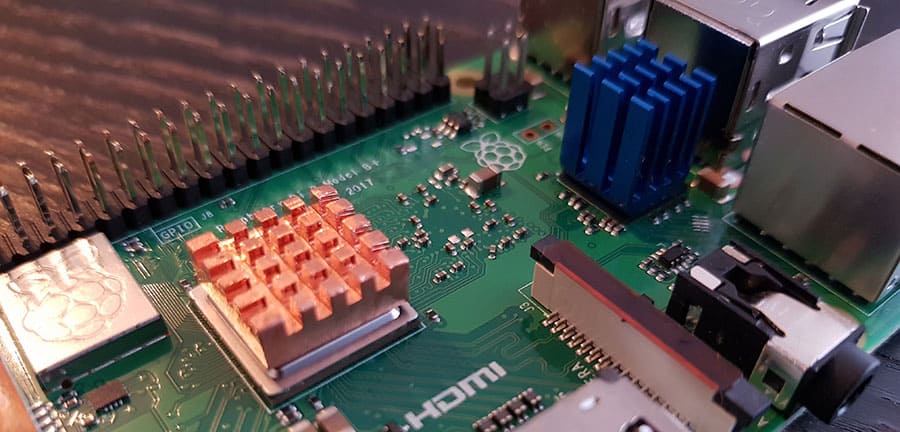
Basically, a heat sink is like a metal sponge that draws heat away from your computer’s processor to keep it cool. Just as a wet sponge absorbs water, a heat sink absorbs heat.
You can see two of mine in this picture, the one on the CPU (left) will absorb the heat from the processor and dissipate it into the air more efficiently than the CPU encasing itself. You can get some on Amazon, it’s a cheap piece of metal with an adhesive.
In short, the heat sink may get very hot, but the processor will stay cooler than without it. This way, it can keep running at optimal speed, which is the main goal here.
When are heatsinks recommended?
Heatsinks are recommended for Raspberry Pi when running processor-intensive tasks, operating in warm environments, or when the Pi is enclosed in a case that restricts airflow.
This is the temperature history of a processor running at full capacity:
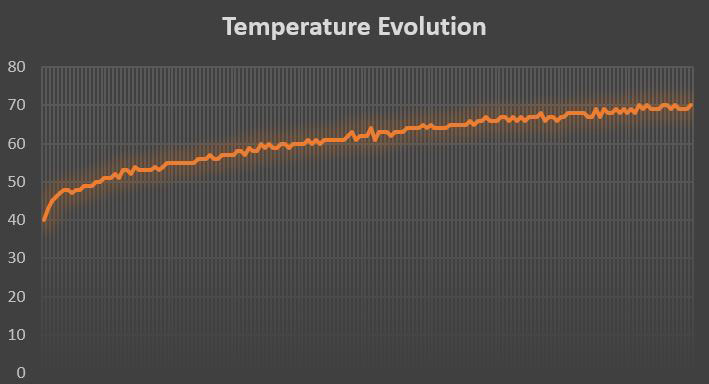
So basically, it’s always increasing. The longer you ask your processor to run at 100%, the hotter it will get, not leaving it time to cool down properly.
The goal of a heatsink will be to flatten this curve, making it stay under 80°C longer, so you can have demanding tasks running for a long time without reaching the point of thermal throttling.
If you are lost in all these new words and abbreviations, request my free Raspberry Pi glossary here (PDF format)!
Download now
In normal use, your CPU may spike in usage when you start a web browser or run a script and then cool down naturally. It shouldn’t stay at 100% all the time. Heatsinks and other cooling solutions are only needed if your CPU stays at a high percentage for a long time.
What are alternatives to heatsinks?
Heatsinks are not the only option for cooling a Raspberry Pi. There are passive cases, fans and even more fancy solutions to consider when overheating is a real problem.
First, I have to say that heatsinks are not magic.
They will help, for sure.
But as mentioned before, they might help prevent thermal throttling during 15 minutes of high CPU usage instead of 5, but it won’t be enough if you are at full capacity all the time.
In this situation, you’ll probably need something different:
- Passive cases are like giant heatsinks and may help flatten the curve longer, or even keep it under the 80° limit forever (like the Flirc case).
- Fans can be added to make sure thermal throttling never happens (they can be noisy, but often you can program them to run only when needed).
- And then you have ultimate solutions that combine everything and keep your processor around 50°C whatever you do (like the Pironman I tested on this website).
Here are my measurements of the different temperature evolutions with different types of setups during a stress test:
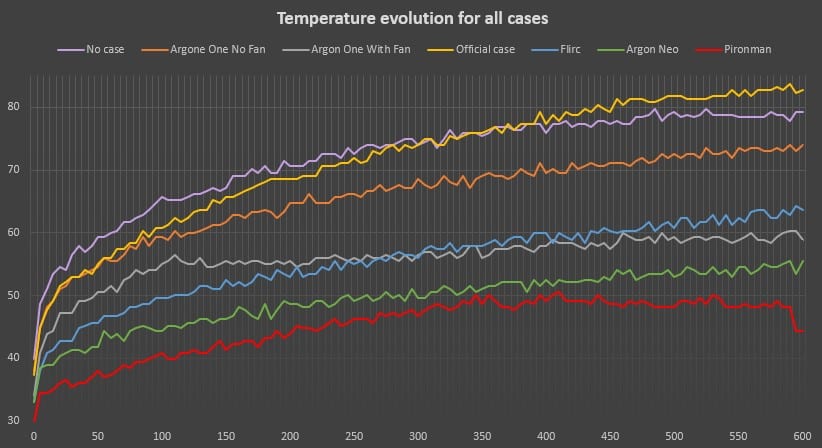
The stress test runs for 5 minutes. Without any cooling system, it’s enough to reach the thermal throttling zone. With passive cases or heatsinks, you’ll generally stay between 60 and 80°C, and if you add fans, it’s even lower than that.
You can find all the details about this test here: What’s The Best Raspberry Pi 4 Case For You? (I Tested Them All). But I hope it isn’t clearer what kind of results you can get by using heatsinks or other cooling solutions.
It's a free PDF guide containing every Raspberry Pi Linux command you should know!
Download now
Reminder: Remember that all the members of my community get access to this website without ads, exclusive courses and much more. You can become part of this community for as little as $5 per month & get all the benefits immediately.
Cooling recommendations for each Raspberry Pi model
Now what should you do from there? Well, my recommendations will be quite different based on the Raspberry Pi model you use (and obviously, what you do with it). Let’s summarize.
Raspberry Pi 5
The Raspberry Pi 5 is the first model where it’s officially recommended to use heatsinks or another type of cooling system. Even the official case has been improved with new thermal management features.
So, if you use a Raspberry Pi 5, even for small tasks or short periods of time, I would get at least some kind of heat sink or passive case to make sure you can use it at its full potential. For an affordable price, you can even add their active cooler (fan), so you don’t worry about the temperature at all.
We don’t have as many options for the Raspberry Pi 5 as we had for the previous models, but I have no doubt that manufacturers will come out with some great products for it. I’ll keep you posted.
Raspberry Pi 4
The Raspberry Pi 4 was the model that introduced a shift in the recommendations. It was released with a bug, and saying it was not necessary to use any cooling system. The bug has been fixed, but it’s still unclear whether you need anything or not.
I personally use passive cases by default for all my Raspberry Pi 4 models, and I’m happy with them. I wouldn’t say it’s mandatory, but it’s often a cheap option, that prevents most issues for typical uses.
I currently use the Argon Neo and Flirc cases, that both do a great job (links to my full reviews), so I highly recommend them.
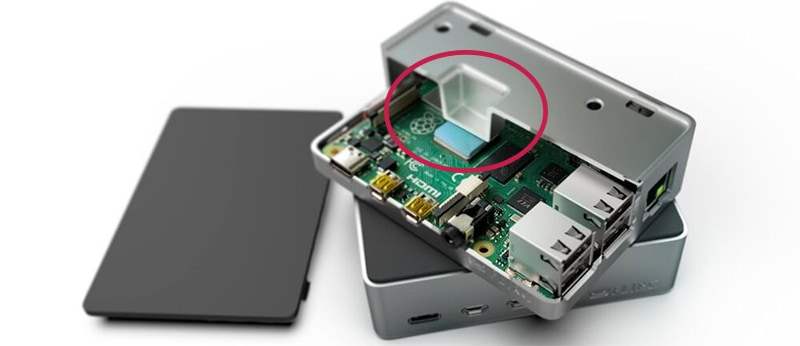
For more intense usage (or if you want to use an SSD), you can check my reviews of the Sunfounder Pironman or the Argon One M2.
I use my Pironman for my Raspberry Pi 4 which runs 24/7 to host my various servers (file server, VPN, web server, etc.). I don’t think the fan even runs, as there is a giant heat sink on it that is enough to keep it cool, but at least I’m not worried about the CPU temperature.
Raspberry Pi 3B+
For the Raspberry Pi 3B+, using heatsinks is a good idea. You won’t need a fan or a fancy cooling system for it, whatever you do, but adding cheap heatsinks on the CPU and network adapter is a good idea.
You can find cheap heat sinks on Amazon, that you just stick to it. Just make sure your case is compatible with that (or use a passive case directly).
Other models
Older Raspberry Pi models, Raspberry Pi Zero, Pico or 400, do not require a heat sink or cooling system. They should run normally for most projects without the need for cooling.
The Raspberry Pi 400 has a built-in heat sink in the keyboard, so you don’t have to worry about it.
And older models are more limited by their processor performance than the temperature itself :-). Just keep an eye on the temperature if you have any doubts, but it should be fine.
Whenever you’re ready, here are other ways I can help you:
The RaspberryTips Community: If you want to hang out with me and other Raspberry Pi fans, you can join the community. I share exclusive tutorials and behind-the-scenes content there. Premium members can also visit the website without ads.
Master your Raspberry Pi in 30 days: If you are looking for the best tips to become an expert on Raspberry Pi, this book is for you. Learn useful Linux skills and practice multiple projects with step-by-step guides.
The Raspberry Pi Bootcamp: Understand everything about the Raspberry Pi, stop searching for help all the time, and finally enjoy completing your projects.
Master Python on Raspberry Pi: Create, understand, and improve any Python script for your Raspberry Pi. Learn the essentials step-by-step without losing time understanding useless concepts.
You can also find all my recommendations for tools and hardware on this page.

